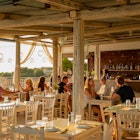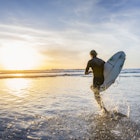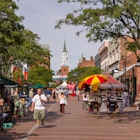
Sep 16, 2025 • 8 min read
Get ready to fall in love with incredible unspoiled landscapes and vibrant cities. If you don't know where to start in Sweden, we've got you covered.

Sep 16, 2025 • 8 min read
Get ready to fall in love with incredible unspoiled landscapes and vibrant cities. If you don't know where to start in Sweden, we've got you covered.

Sep 16, 2025 • 4 min read
Local beer festivals all over Bavaria are among the biggest and liveliest bashes in Germany.

Sep 16, 2025 • 11 min read
Here are our favorite things to do on the Spanish island of Mallorca.

Sep 15, 2025 • 7 min read
Crossing Canada’s vastness might seem like a daunting challenge – and it can be. Our guide to getting around the country will help.

Sep 15, 2025 • 8 min read
Indigenous peoples form 9% of India's population. Learn about these diverse cultures with this guide.

Sep 15, 2025 • 10 min read
On a trip to Southern Utah, a devout solo traveller discovers the importance of travelling with chosen family.

Sep 15, 2025 • 8 min read
Discover the Yucatán Peninsula’s Maya ruins, cenotes, colonial cities, pristine beaches, wildlife and vibrant Yucatecan culture.

Sep 15, 2025 • 7 min read
How much more would you enjoy that glass of merlot if you drink it right where it was grown? Behold 10 of North America's top wine regions.

Sep 15, 2025 • 5 min read
A day trip from San Jose to soak up the Bay Area brings wildlife spotting, beach towns and California's most famous wine region.

Sep 15, 2025 • 7 min read
Savvy visitors to Copenhagen know to schedule a few days to explore the relaxed charm of the Copenhagen Coast, too.

Sep 15, 2025 • 8 min read
It's impossible not to fall in love with Ljubljana. Here are the best experiences in Slovenia’s vibrant, bijou capital.

Sep 15, 2025 • 9 min read
From cities to countryside to high mountain peaks, experience the best of Germany with these top things to do.

Sep 13, 2025 • 12 min read
You want to visit Rome, but you don't want to contribute to the potential for overtourism in the Eternal City? Here's how to experience Rome sustainably.

Sep 12, 2025 • 16 min read
From remote Scottish beaches to castles and mighty mountains, discover the highlights of the North Coast 500 with this in-depth road trip guide.

Sep 12, 2025 • 11 min read
Greece is a culinary paradise – this is your ultimate guide to what you should eat and where to find it.

Sep 12, 2025 • 7 min read
Scotland's North Coast 500 is a feel-good, blissful drive through the North Highlands. Here's how to experience it sustainably.

Sep 12, 2025 • 11 min read
New Zealand has a diverse coastline with many stunning beaches. From dramatic black-sand coves to top surfing spots, here are the very best.

Sep 12, 2025 • 10 min read
Farmer's markets, localvore restaurants, rural charm, pristine nature and a wealth of history – whatever you’re seeking, Vermont has it.

Sep 12, 2025 • 13 min read
Our guide to the Camino de Santiago: the Camino Francés brings you closer to the culture and history of one of the world's great adventures.

Sep 12, 2025 • 8 min read
Enjoy the British Music Experience museum, go stand-up paddleboarding and visit a Victorian plant conservatory, all during your weekend in Liverpool.

Sep 11, 2025 • 6 min read
Pack up your beach towel and tear yourself away from the coast – it's time to immerse yourself in Montenegro's wild side and explore its national parks.

Sep 11, 2025 • 7 min read
Lonely Planet’s Alicia Johnson shares her best tips from a four-day visit to Las Vegas.